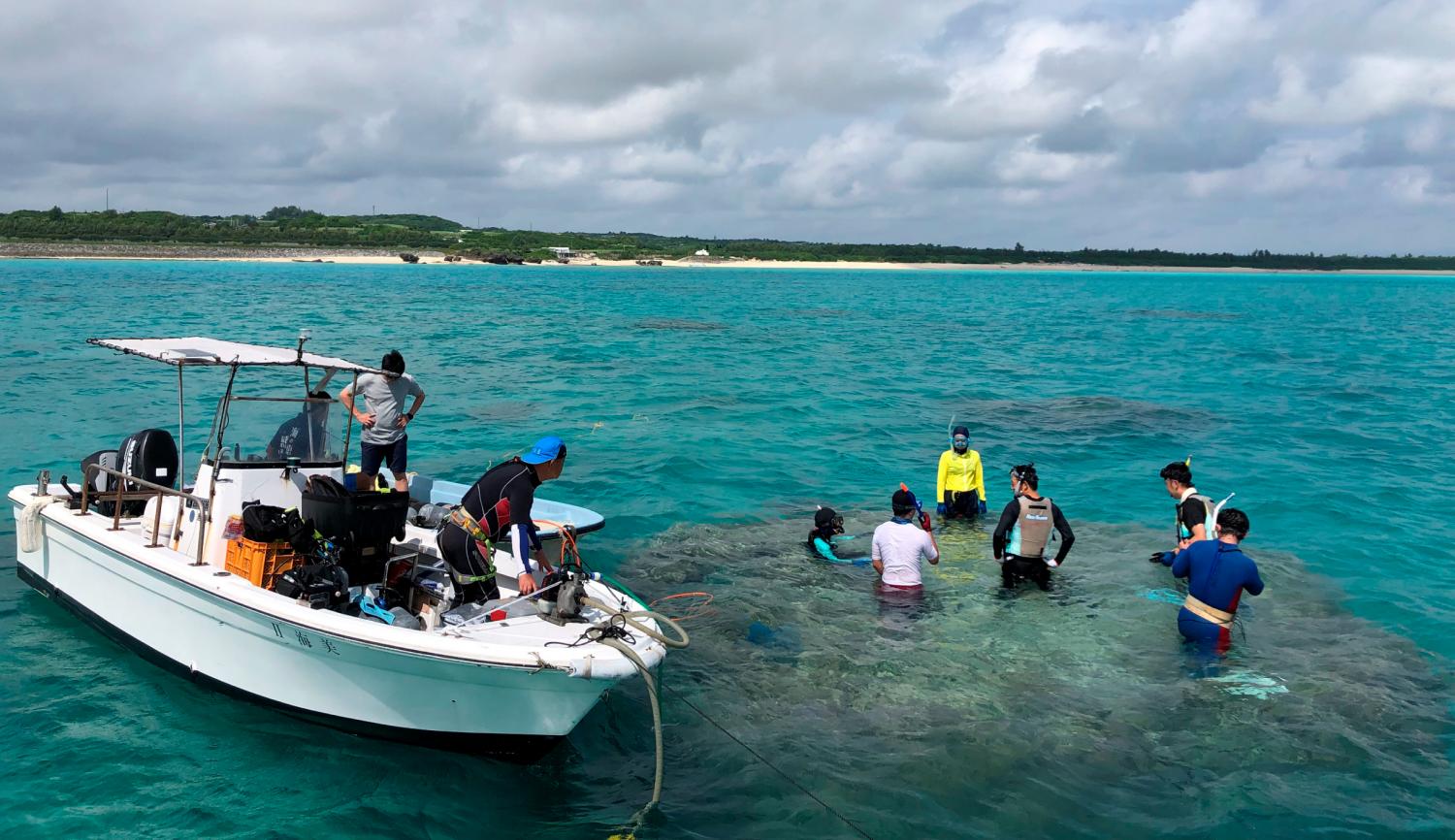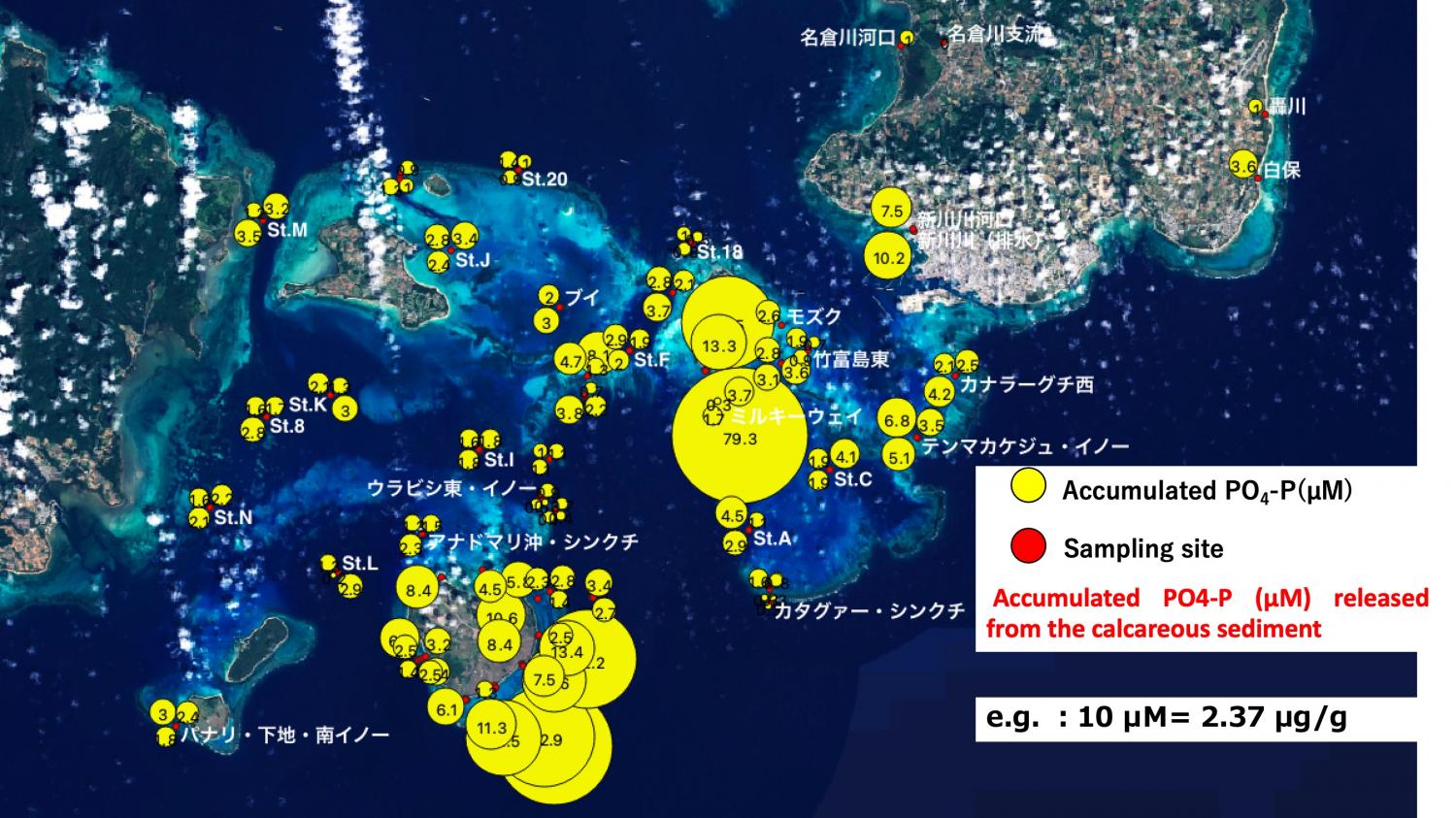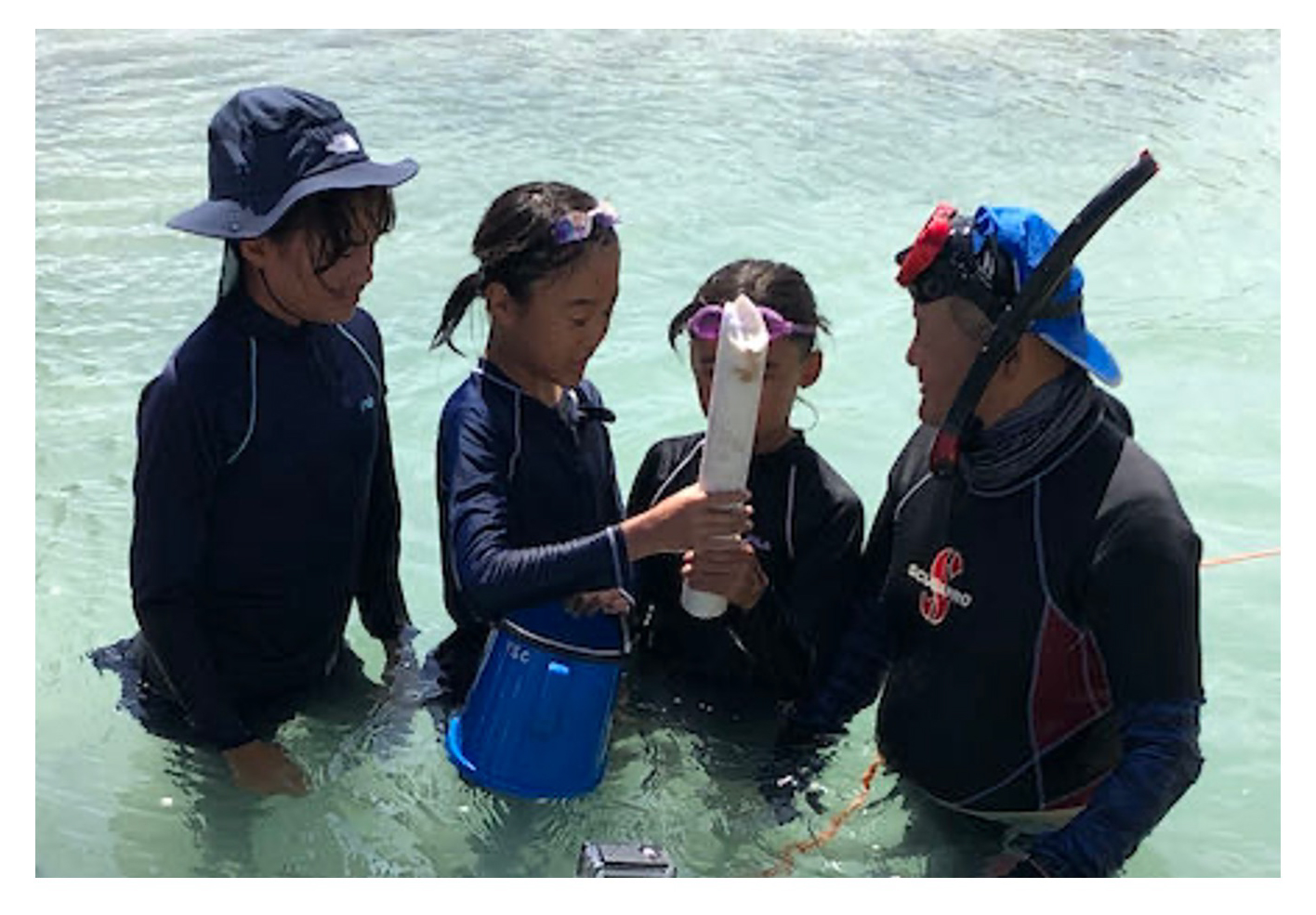
Research Program
Co-creation of the Earth-human System Program
LINKAGE Project
- Related links
Adaptive Governance of Multiple Resources based on Land-Sea Linkages of the Water Cycle: Application to Coral Reef Island Systems
Abstract
Focusing on coral reef island systems located in the Ryukyu Arc as well as in the tropical and subtropical western Pacific, we are elucidating the connections between land and sea through the water cycle, the biocultural diversity and community capability, and the evolution and structure of organizations and institutions that govern the use and management of multiple resources. By integrating and visualizing the above interconnected components, we aim to shed light on adaptive governance of multiple resources based on the water cycle.
People living in tropical and subtropical islands where coral reefs develop utilize the blessings of limited water resources such as groundwater and spring water, as well as marine and forest resources.
Water circulates between the land and the sea while changing its shape, connecting the coral reef ecosystem and the land, and nurturing the biodiversity and culture unique to the region.
However, recent land use and socioeconomic changes have led to the depletion of water resources and deterioration of water quality, as well as changes in precipitation patterns due to climate change, rising seawater temperature and sea levels due to global warming, and ocean acidification. Due to changes in the marine environment, the deterioration of coral reef ecosystems is progressing, making it difficult for people to use natural resources such as water resources, fisheries resources, and forest resources, that is, multiple resources.
Therefore, we are conducting research to strengthen “adaptive governance,” in which social mechanisms and institutions for environmental conservation and natural resource management are adjusted to the situation together with local people, so that people living on coral reef islands can continue to use multiple resources.
To this end, this project first aims to elucidate the realities of water circulation and multiple resources through various means of analyzing groundwater and coral reef ecosystems. We seek to understand and predict the responses of multiple resources to changes in socio-economic factors and climate change. Additionally, utilizing a historical ecological approach, the project aims to uncover the cultural values, connections, and diversity of nature nurtured within island communities. By doing so, we will elucidate the mechanisms for sustaining livelihoods in island communities with limited resources.
On the other hand, through behavioral science and institutional analysis, we will clarify the transition and multilayered nature of the system, organization, and awareness of adaptive governance. In addition, we will create new value by visualizing and integrating the relationships between scientific knowledge, indigenous knowledge, policy knowledge, and other knowledge necessary for adaptive governance.
Through these results, we hope to shed light on the connections between land and sea through water cycle as well as on the adaptive governance of multiple resources, in order to contribute to the realization of a resilient nature-symbiotic society in coral reef island systems.
Results
What we know so far
In the southern part of Okinawa Island, nitrate nitrogen contamination in groundwater has become a problem in some areas. We have developed an accurate evaluation method for nitrogen sources (chemical fertilizers, livestock manures, etc.) using several stable isotopes to lead to effective pollution control measures.
In the Sekisei Lagoon, located between Ishigaki Island and Iriomote Island, a field survey revealed that the coral density becomes almost zero when the concentration (threshold) of phosphate (accumulated phosphorus) adsorbed in the calcareous sediment exceeds a certain level. By setting this threshold as a target, it becomes possible to determine and implement an acceptable land-derived load, and it is expected that coral coverage will recover in the future.
From the perspective of behavioral science, we conducted an awareness survey on the compatibility of human movement and infection control during the coronavirus crisis on an island with limited resources. It has become clear that negative reactions to the movement of people are mitigated by the acquisition of health certificates and the effects of infection control certification by local governments.
 Figure 1. Mapping of accumulated nutrients (phosphate) at seafloor in the 26 Sekisei Lagoon. Circle size corresponds to concentration.
Figure 1. Mapping of accumulated nutrients (phosphate) at seafloor in the 26 Sekisei Lagoon. Circle size corresponds to concentration.
Noteworthy items
We built a 3D water circulation simulation model for the southern part of Okinawa Island. We created a projection mapping model (P+MM) that can visualize various types of information, such as groundwater flow and changes in land use, and used it in the Yaese town hall and regional roundtable meetings (Photo 1).
 Photo 1. Projection Mapping Model (P+MM) of southern Okinawa exhibited in the lobby of Yaese Town Hall.
Photo 1. Projection Mapping Model (P+MM) of southern Okinawa exhibited in the lobby of Yaese Town Hall.
 Figure 2. Poster for an old photo exhibition on the theme of “Working” on Yoron Island.
Figure 2. Poster for an old photo exhibition on the theme of “Working” on Yoron Island.
In order to elucidate the diversity of resource use on the island and the changes in the connections between them, we are working with local residents to collect and record local historical and cultural materials as well as surveys of “interviews” related to indigenous knowledge. On Yoron Island, an exhibition of old photographs and a participatory digital exhibition (https://yunnu-photo.org/) were held on the theme of “work” from among approximately 5,000 photographs provided by the local residents (Figure 2), focusing on logistics, changes in island life, port development, and land-use changes in the coral reefs since the 1960s.
In addition, children also participated in coral-coring survey at Yoron Island (Photo 2). By analyzing coral growth rings from ~100 years ago to the present, we will elucidate how the coral reef system of Yoron has changed due to human activities.
News
-
{{ data.disp_date }}
{{ data.content }}
Member
Project Leader
YASUMOTO Jun
Sub Leader
SHINJO Ryuichi University of the Ryukyu
Researchers at RIHN
TOMOJIRI Daiki Researcher
LEONG, Chris Researcher
Main Members
KUBO Yoshiaki Kwansei Gakuin University
TAKAHASHI Soyo University of the Ryukyus
RAZAFINDRABE, Bam H.N. University of the Ryukyus
FUJITA Kazuhiko University of the Ryukyus
KURIHARA Haruko University of the Ryukyus
TOKI Tomohiro University of the Ryukyus
NAKAMURA Takashi University of the Ryukyus
ASAMI Ryuji Tohoku University
HOSONO Takahiro Kumamoto University
TOYOTA Masashi Shinshu University
YASUMOTO Ko Kitasato University
MIZUSAWA Nanami Kitasato University
IGUCHI Akira National Institute of Advanced Industrial Science and Technology
IIJIMA Mariko National Institute of Advanced Industrial Science and Technology
OHNO Tomohiko Nagoya University
TANAKA Toshinori Kyusyu University
CHIBA Tomoyo Osaka Metropolitan University
ENDO Takahiro Osaka Metropolitan University
SHINBO Teruyuki Kochi University
MATSUNO Natsuko Nihon University
ITO Shinichi Mejiro University
IWAMI Asako Prefectural University of Kumamoto
NAKAMOTO Atsushi Okayama University of Science
GOTO Makoto National Museum of Japanese History
GOYA Junko Okinawa Prefectural University of Arts
MUKAI Daisaku Okinawa Prefectural University of Arts
LEE Choonja Kobe Women's University
ANKEI Yuji Yamaguchi Prefectural University
ANKEI Takako Institute for Biocultural Diversity
TOGUCHI Ken Nanto Placenames Research Center
MORIGUCHI Mitsuru Okinawa University
TOYAMA Masanao Okinawa University
ITANI Gen Kumanomi Nature-School
ITANI Miho Kumanomi Nature-School
YOSHITOMI Tomoyasu Tokyo Gakugei University
SASANO Sachia Fisheries Technology Institute
AFGATIANI, Pingkan Mayestika University of the Ryukyus
MINAMI Ryusei University of the Ryukyus
HONG Sun-Kee Institution for Marine & Island Cultures, Mokpo National University
ARMID, Alrum Halu Oleo University
MANGIDI, Uniadi Halu Oleo University
SUDIA, La Baco Halu Oleo University
OETAMA, Dedy Halu Oleo University
LAWELLE, Sjamsu Alam Halu Oleo University
TAKWIR, Amadhan Halu Oleo University
BARATA, La Ode Ahmad Halu Oleo University
MANAN, Abdul Halu Oleo University
TARIMA, La Wakatobi Regency
Evaluation by an external evaluation committee
Research schedule
| 2020 | 2021 | 2022 | 2023 | 2024 | 2025 | 2026 |
|---|---|---|---|---|---|---|
| FS1 | FS/PR | FR1 | FR2 | FR3 | FR4 | FR5 |
